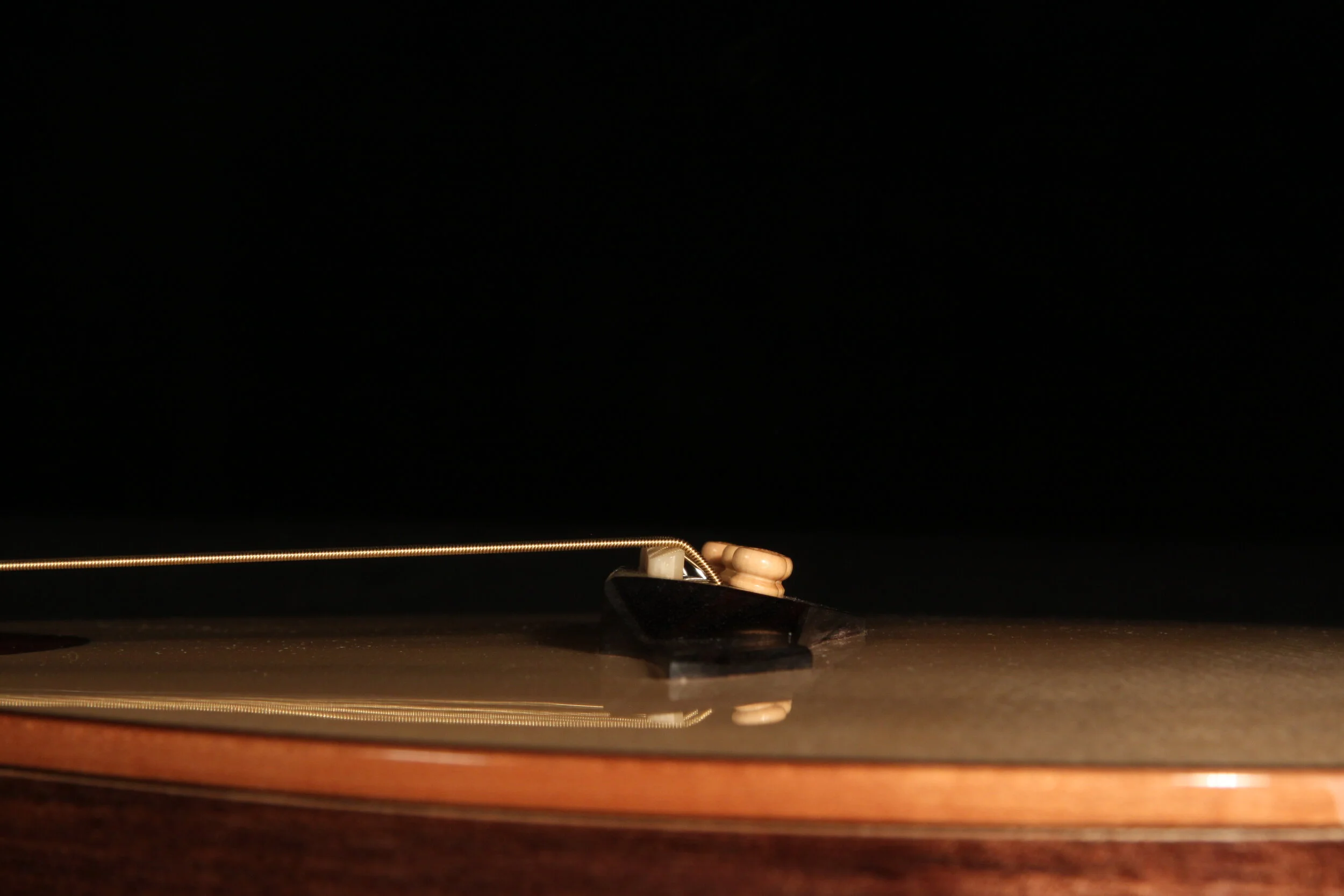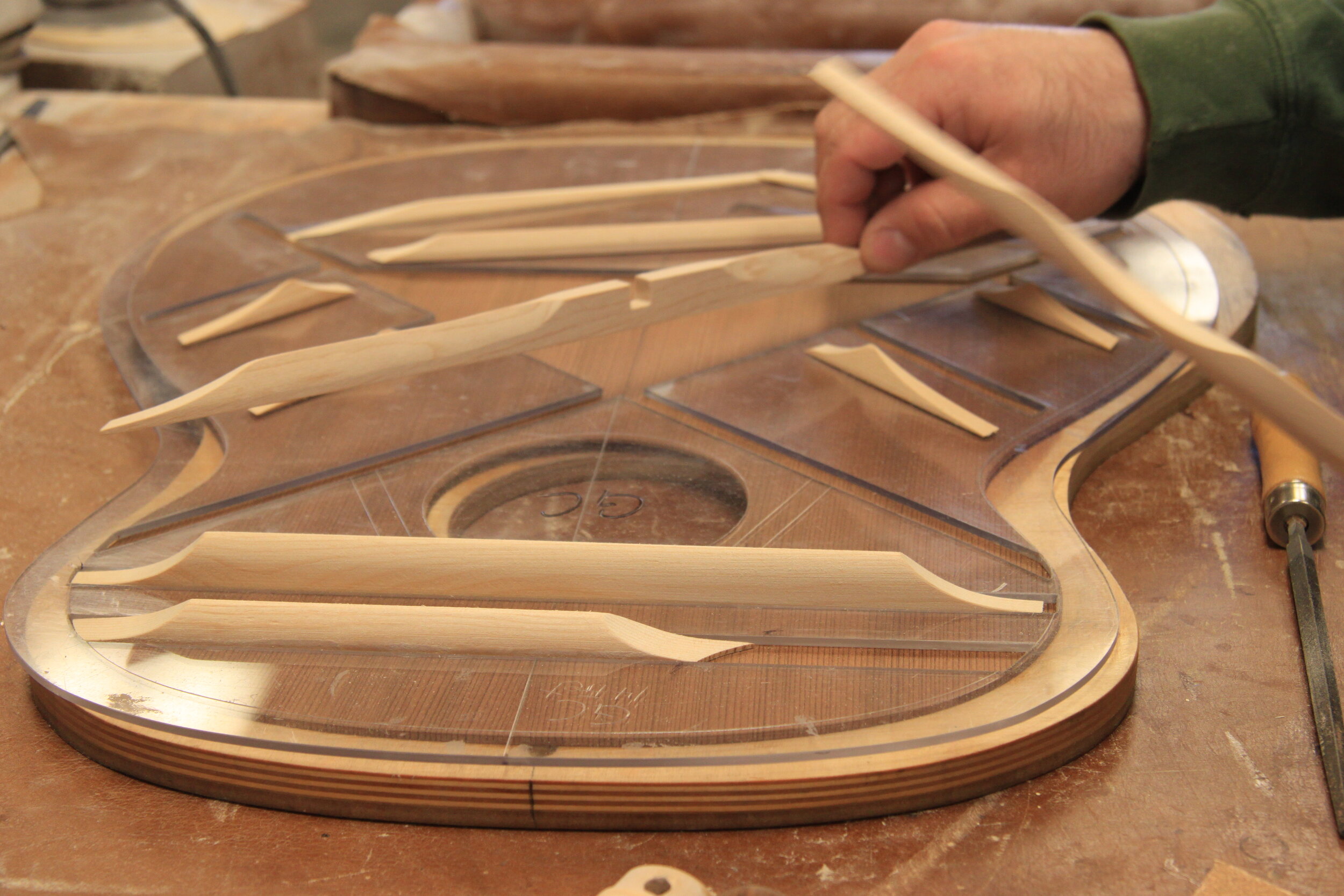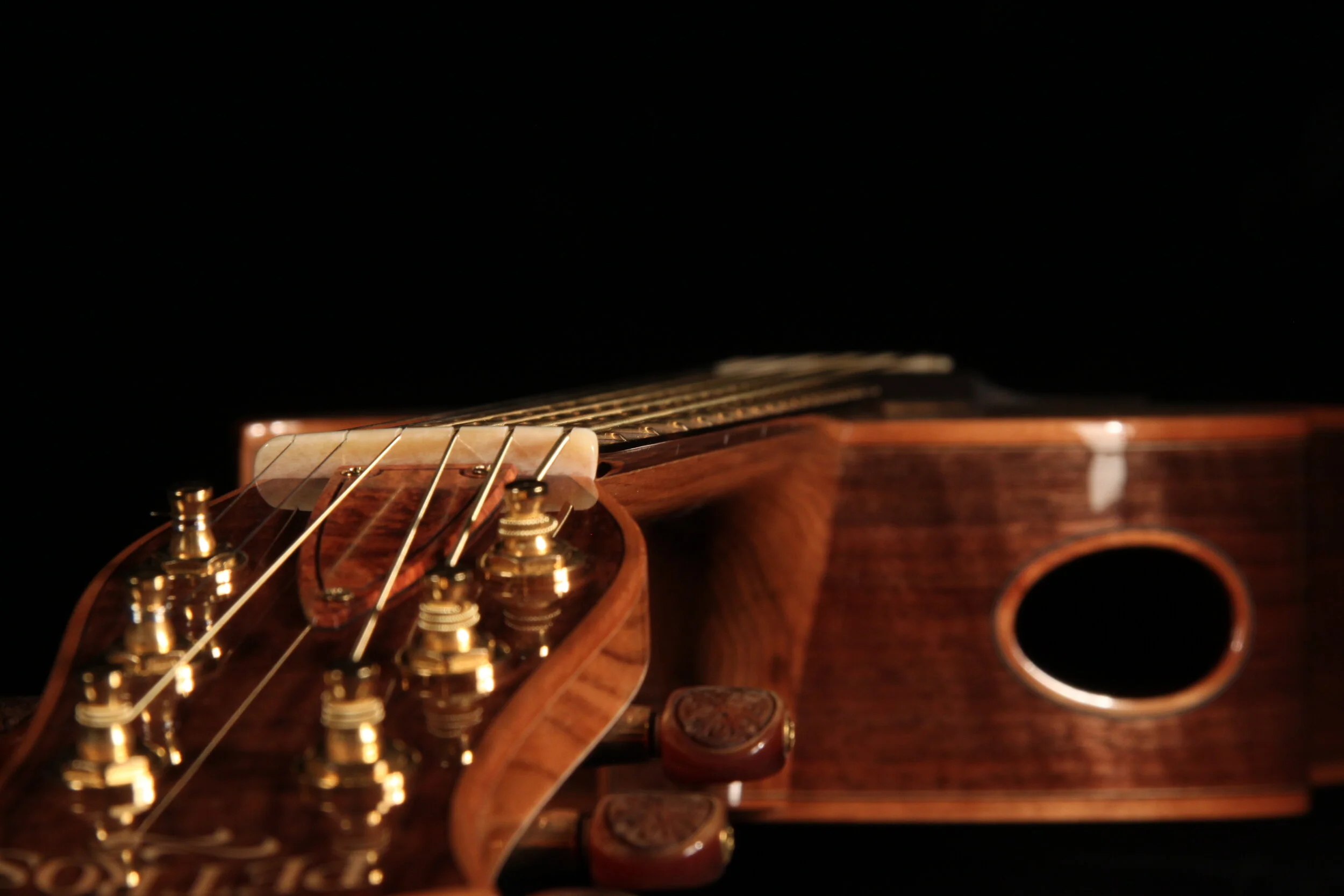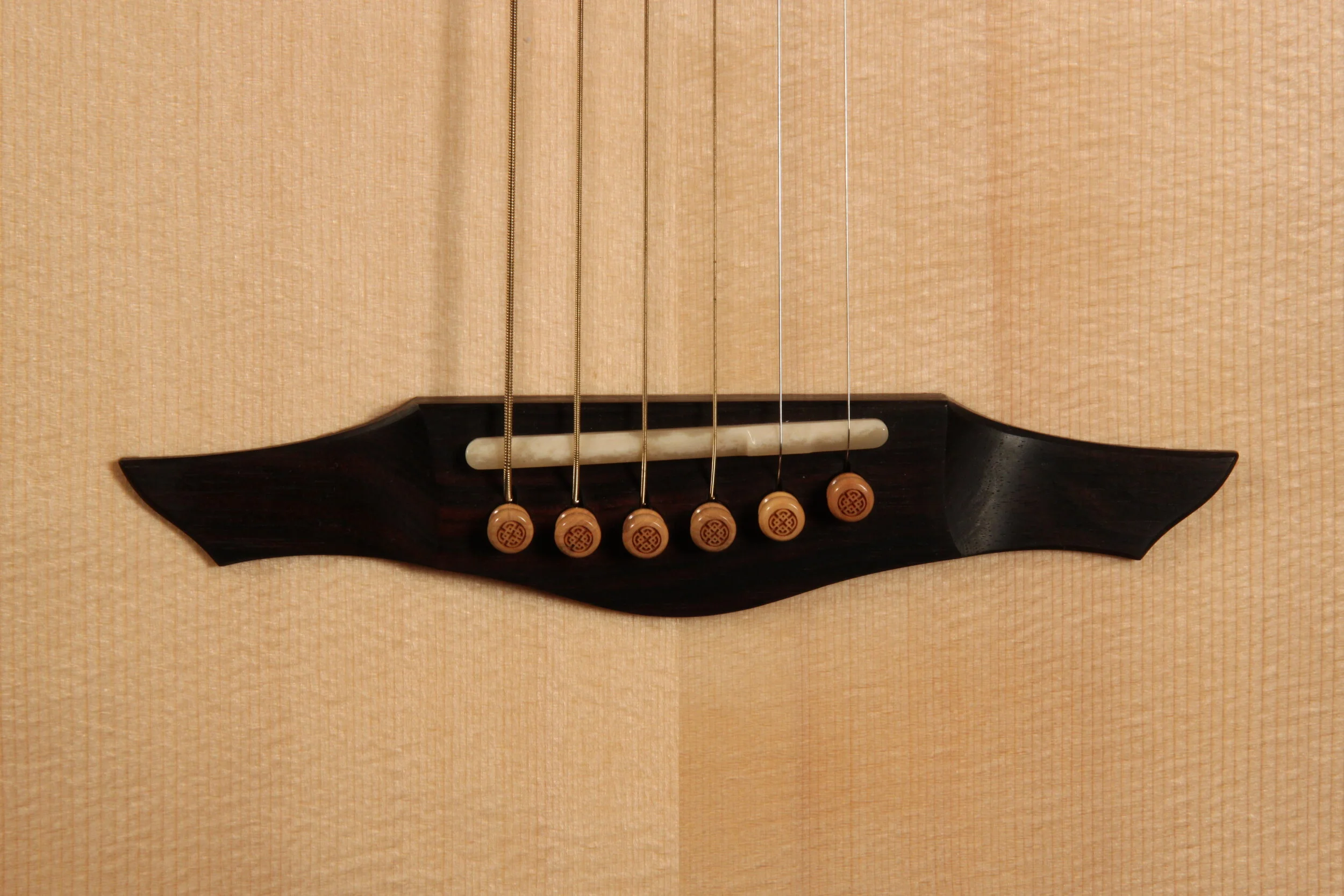Standard Features
These are some of the features that distinguish Petros Guitars from other guitar makers. Some of these features require much more time and effort in the manufacturing process and have been eliminated from guitars manufactured by large guitar companies. Petros guitars makes only a limited number of guitars and is committed to making the best guitars possible.
Top Arch
The Pre-stressed arched top is responsible for the ringing, sustaining trebles as well as increased stability. The braces are shaped to a 30 foot radius and glued to the top that is placed on a concave work board in a vacuum press. Flexing a saw blade raises its pitch. This is the same principal with our tops. The fundamental trebles sing clearly as well as the enhanced set of overtones. You get the full potential of each string. Increased stability is another benefit. Being pushed up with the arched braces prevents the top from going up any further. This arch also works just like a car bridge and resists going down. Flat tops have the latitude to go up and down with temperature and humidity changes. This arch is also designed to allow the fret board to go up that ramp at the body. No drop-off fret boards as seen on many flat tops.
Top Graduation and Bracing
The Graduated top makes for more bass. Petros Guitars meticulously thin the top around the edge which acts just like the soft surround on a speaker. This enables the top to move more easily as a whole creating big basses. Symmetrical bracing makes for equal stress on the top. The bass strings don’t have less tension on them to lower the pitch… they just add more mass with the windings. The tension on each string is quite equal. Making one side of the top looser and the other tighter for bass and treble production is counterproductive. We believe asymmetric bracing creates undue tension and this is what we try to eliminate so the top is freer to vibrate. We see the guitar top as a speaker. Speakers are always symmetrical and produce a wide range of tones.
Bridge Plate
The bridge plate system is another unique feature of Petros guitars. Here is another place where tone, structure and stress are accounted for in a new way. Although the bridge is also a brace, the top can use some additional support for all that string tension at that location. We also need something hard to withstand wear from the ball ends of the strings. Most guitars use a great big Rosewood or Maple plate to do both things. We believe this is too much hardwood for this sensitive tonal area. Petros Guitars, unlike anyone else, uses an extra tonal and strength appropriate spruce support in that important area. Then we add a small ebony pin plate to support the ball ends of the strings. Ebony is much harder than either Rosewood or maple. The Petros system has less mass and more strength while using spruce’s great tonal characteristics.
Neck Construction
Petros necks are constructed with two pieces of end to end flip matched high quality Honduras Mahogany or Butternut. If a board had an inclination to warp in a certain direction, then the technique that Petros Guitars uses counteracts that tendency.
Real dovetailed neck joints are becoming a thing of the past for reasons of manufacturing convenience for many factories as well as numerous small builders. Not for Petros Guitars. We believe the integrity of this joint is one more piece of the sound puzzle and won’t eliminate it.
The fingerboard edges taper rather than being perpendicular to the face. This enables us to take almost 5% more wood off the neck . This feature allows lots of room on top without the feeling of a clubby neck. Less fatigue, better articulation.
Nut Width
The standard nut width is 1 13/16″ with plenty of room on the treble side for the high E string. A common error is to have the E string too close to the edge. In conjunction with our slender neck you won’t notice it’s a wider fret board until you realize you are hearing notes you haven’t heard before! Greater string spacing, slender neck, no more muting out notes with those fat little fingers. Top quality bone is the standard nut material for Petros Guitars.
Backward Tilt Bridge
The backward tilt bridge and saddle are a feature unique to Petros Guitars. That angle causes the string length to change appropriately when the height is raised or lowered thus self compensating for string height. In addition, the break angle of the strings is equalized which puts less stress on the saddle and bridge. Look at many standard straight up and down saddles and notice how they are now leaning forward. This forward stress can actually break the front of the bridge right off and not only is there undue stress but the intonation is now worse than originally designed. Although string tension is stress, the more you can accommodate it the better. The extra width of the Petros fully compensated saddle is also a great stabilizing factor.
Compensated Saddle
A fully compensated saddle is an absolute must for virtually perfect intonation. This is not only essential for standard tuning but a perfect boon for alternate tunings. A quick explanation of the need for compensation: Although the 12th fret is theoretically halfway between the nut and the saddle, you are stretching the string when you press it to the fret. This makes the note go sharp. This problem is “compensated” for by moving the saddle back to bring the note back in tune with the harmonic. Top quality bone is the standard saddle material for Petros Guitars.







